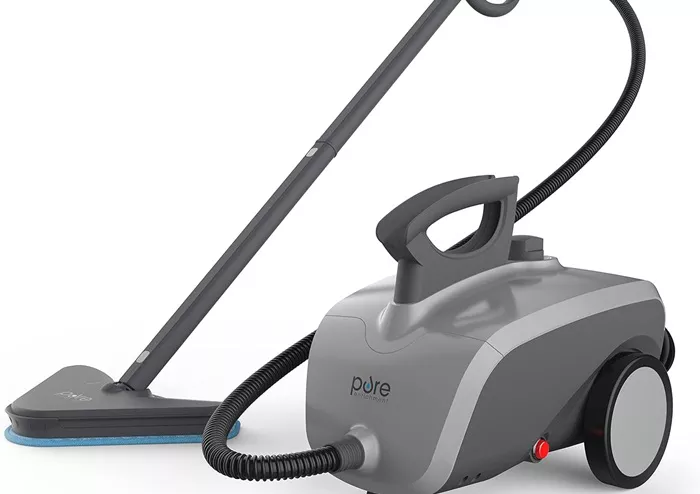Brick pavers add warmth and character to outdoor spaces, whether used for driveways, patios, or walkways. Over time, however, they accumulate dirt, grime, mold, and stains that dull their appearance and create safety hazards. Pressure washing is a powerful method to restore their beauty and functionality. This guide will walk you through the process, from preparation to post-cleaning maintenance, with a focus on safety, equipment selection, and care for different brick types.
The Importance of Cleaning Brick Pavers
Aesthetic Restoration
Dirty brick pavers can make even the most carefully designed outdoor area look neglected. Dust, leaves, and organic growth settle into the pores of the bricks, causing discoloration and a lackluster finish. Pressure washing removes these contaminants, revealing the bricks’ natural texture and color. Whether your pavers are classic red clay bricks or modern concrete blends, a thorough cleaning can transform their appearance, enhancing your property’s curb appeal.
Safety Enhancement
Mold and mildew thrive in damp environments, making brick pavers slippery when wet. This poses a significant risk of slips and falls, especially in high-traffic areas. By eliminating these growths, pressure washing creates a safer surface for daily use. Additionally, removing debris from the joints between pavers reduces tripping hazards and maintains the structural integrity of the paving system.
Long-Term Durability
Trapped moisture from dirt and stains can lead to long-term damage, such as cracking, spalling, or erosion. Pressure washing prevents these issues by removing the contaminants that retain moisture. Regular cleaning also allows you to inspect the pavers for early signs of wear, such as loose bricks or damaged joints, enabling timely repairs that extend the lifespan of your outdoor flooring.
Preparing for Pressure Washing
Safety Precautions
Prioritize safety by wearing protective gear: safety goggles to shield your eyes from water and debris, gloves to protect your hands, and long sleeves/pants to avoid skin irritation. If working at height, use a stable ladder placed on level ground. Keep children and pets away from the work area, and avoid operating the pressure washer in wet or windy conditions to minimize accidents.
Equipment Selection
Choose a residential-grade pressure washer suitable for brick pavers. Look for a model with adjustable pressure settings to adapt to different cleaning needs. A machine with moderate pressure output is ideal for most brick types, balancing effectiveness with safety.
Attachments matter: a wide-angle nozzle is great for general cleaning, distributing water evenly to avoid damage. For stubborn stains, use a concentrated nozzle sparingly, but always test on a small area first. A turbo nozzle, if available, can tackle tough grime but should be used with caution to prevent surface damage. Select a pH-balanced, biodegradable detergent formulated for outdoor surfaces. For organic growth, a mild bleach-based solution may be effective, but ensure it is safe for your bricks by testing on an inconspicuous spot.
Work Area Preparation
Clear the space of furniture, planters, and debris to ensure full access to the pavers. Protect nearby plants by covering them with tarps or plastic sheeting. Inspect the area for loose bricks, cracks, or damaged joints. Repair any issues before cleaning to prevent further damage during pressure washing.
Caring for Different Brick Types
Clay Bricks
Clay bricks require lower pressure to avoid chipping or discoloration. After washing, inspect for cracks or chips and repair them with a brick patcher. Allow the bricks to dry completely before applying a sealer to protect their porous surface.
Concrete Bricks
These bricks can handle higher pressure settings but need attention to joints. Use a narrow nozzle to clean between pavers, removing dirt and weeds. Treat rust stains with a specialized remover, followed by thorough rinsing.
Sealed Bricks
Use lower pressure to preserve the sealer. After washing, check for peeling or fading. If the sealer is damaged, apply a new coat to maintain protection against stains and moisture.
Post-Washing Maintenance
Drying and Inspection
Let the pavers dry naturally, preferably in a well-ventilated area. Avoid walking on them until fully dry to prevent tracking dirt. Once dry, inspect for missed stains or damage, such as loose bricks or cracked joints.
Repairs and Sealing
Address minor repairs promptly: use a brick repair kit for small cracks and replace loose pavers. For long-term protection, apply a sealer suitable for your brick type. Acrylic sealers are popular for their durability and natural finish, while epoxy sealers offer heavy-duty protection for high-traffic areas.
Regular Maintenance Tips
Sweep regularly to prevent debris buildup and address spills immediately to avoid stains. In areas with heavy mold growth, consider an annual preventive treatment with a mild bleach solution to keep your brick pavers looking their best.
Conclusion
Pressure washing brick pavers is a straightforward yet essential task to maintain their beauty and functionality. By following these steps—from safety preparations to proper equipment use and post-cleaning care—you can achieve a thorough clean without damaging the bricks. Whether dealing with everyday dirt or stubborn stains, adapt your approach to the specific needs of your brick type and prioritize gentle, consistent care. With regular maintenance, your brick pavers will continue to enhance your outdoor space for years to come.
Related topics:

